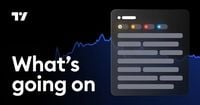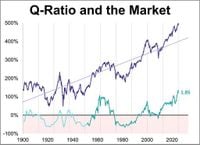U.S. equity markets faced a turbulent start to April 2025, with investors pulling a staggering $3.2 billion from U.S.-listed ETFs, reflecting a cautious sentiment amid ongoing volatility. The SPDR S&P 500 ETF Trust (SPY) led the outflows, witnessing a significant $6.5 billion in redemptions, making it the standout loser for the day. This trend of withdrawals is particularly concerning as SPY has long been regarded as the world’s largest ETF.
As the first quarter of 2025 drew to a close, the S&P 500 Index had reached a record high of 4,800 on February 19, only to end the quarter down by 4.3%. This downturn highlights the dichotomy between short-term performance and long-term growth potential, as the energy sector showcased resilience with a return of 10.2% during the same period. The energy sector's strength is largely attributed to the booming liquefied natural gas (LNG) industry, which has seen the U.S. solidify its position as the largest LNG exporter.
In March 2025, the U.S. exported 9.3 million metric tons (MT) of LNG, surpassing the previous record of 8.6 MT set in December 2023, according to reports from Reuters. This surge in LNG exports has been a boon for the energy sector, which, along with defensive sectors like Health Care, Consumer Staples, and Utilities, has provided some stability in an otherwise shaky market. These sectors are often seen as safe havens during periods of market volatility, and their performance during the first quarter of 2025 confirmed this trend.
However, the broader market sentiment has been dampened by declining consumer confidence and underwhelming results from major technology stocks, which contributed to the struggles of the Consumer Discretionary and Information Technology sectors. The performance of these sectors has weighed heavily on overall U.S. equities, leading to a challenging environment for investors.
Amidst this backdrop of market uncertainty, Canadian investors have sought to capitalize on specific U.S. equity sectors. BMO Asset Management Inc. recently launched the BMO SPDR Select Sector Index ETFs, allowing Canadian investors to access all 11 sectors of the Global Industry Classification Standard System (GICS) with the convenience of Canadian-listed ETFs available in both hedged and unhedged versions. This new suite of U.S. sector index ETFs aims to provide investors with more targeted exposure to the U.S. equity market.
On the factor investing front, the Low Volatility factor performed well, returning 7.3% during the first quarter. The combination of Low Volatility and High Dividend investment factors, particularly as reflected in the S&P 500 Low Volatility High Dividend Index, demonstrated strong performance. This index tracks the 50 least-volatile, high-dividend-yielding stocks in the S&P 500 Index, providing investors with a balance of stability and income amidst market fluctuations.
For Canadian investors looking for U.S. equity solutions with a low-volatility focus, options such as the BMO Low Volatility U.S. Equity ETF and the TD Q U.S. Low Volatility ETF are available. Additionally, those interested in both low volatility and dividend income can explore the CIBC Qx U.S. Low Volatility Dividend ETF and the Franklin U.S. Low Volatility High Dividend Index ETF. The latter aims to replicate the S&P High Yield Dividend Aristocrats Screened Floating Market Capitalization Weighted Index while aligning with specific environmental, social, and governance (ESG) criteria.
Despite the outflows and market challenges, total ETF assets remained stable at $10.4 trillion as of April 3, 2025. This resilience in total assets indicates that while investors may be pulling funds from certain sectors, there remains a significant level of investment capital in the ETF space.
In addition to the outflows from SPY, the iShares 20+ Year Treasury Bond ETF (TLT) saw nearly $1 billion in redemptions, reflecting the ongoing volatility in long-term interest rates. Conversely, the iShares Core S&P 500 ETF (IVV) managed to attract $1.7 billion, indicating that selective buying is still occurring, particularly in riskier fixed income assets. The iShares iBoxx $ High Yield Corporate Bond ETF (HYG) also saw inflows of $740 million, suggesting that some investors are taking advantage of opportunities in high-yield markets.
As leveraged ETFs led inflows with $349.7 million, the U.S. equity ETFs experienced the steepest outflows, totaling $2.6 billion. This trend underscores the ongoing challenges facing U.S. equities as investors navigate a complex landscape of economic indicators and corporate earnings.
While the market grapples with these challenges, the performance of defensive sectors and the growing LNG industry provides a glimmer of hope for investors seeking stability. As the energy sector continues to thrive, it may well serve as a counterbalance to the broader market's volatility.
Overall, investors remain cautious as they assess the implications of economic data, corporate earnings, and geopolitical factors on the U.S. equity landscape. The first quarter of 2025 has set a challenging tone, but opportunities may still exist for those willing to look beyond the immediate market fluctuations.
This article is for informational purposes only and does not constitute investment advice. Investors are encouraged to consult with a registered financial professional before making any investment decisions.






